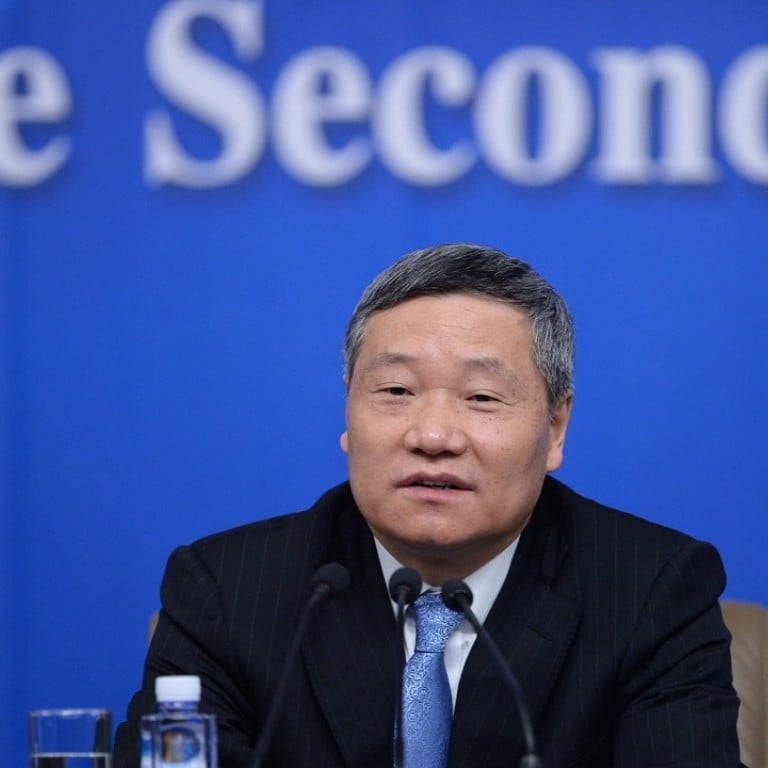
CSRC chief Xiao Gang: the accidental banker and the Chinese stock market circuit breaker
Xiao Gang, a seasoned banker, had to wait a long time to become chairman of the China’s securities regulator.
Yet Xiao, 58, is no doubt finding that the ship is not easy to steer, especially when the person at the helm wants to use Western practices to improve the notorious market.
The mainland stock market has had a roller-coaster ride and sent unprecedented shock waves through global financial markets during Xiao’s three years in the job, making him an easy target for blame.
That tumult is a contrast to the smooth trajectory the rest of his career has taken since graduating from the Hunan College of Finance and Economics in 1981.
Xiao started out in the industry working as the secretary for Lu Peijian, the sixth governor of the People’s Bank of China.
From 1998 to 2003, Xiao was a central bank deputy governor before becoming the chairman of the Bank of China.
READ MORE: Chinese stocks steady after another fresh state injection to prop up prices
In March, 2013, he was chosen to head the China Securities Regulatory Commission.
Yet, in a televised interview when he was still Bank of China chairman, Xiao admitted that he dreamed of studying Chinese when he was young but his poor maths results disqualified him from a place in the Chinese literature faculty, leaving him to be “thrown into” learning finance.
“I didn’t study economics voluntarily,” Xiao told Phoenix TV. “I didn’t even know what finance was when I entered the College of Finance and Economics.”
Despite that, Xiao managed to climb up the ranks and tried to implement various Western market practices as CSRC chairman.
Xiao was just five months into the job when raised the idea for the circuit breaker, a mechanism which took effect on January 1.
Small investors have a herd mentality, which easily leads to frantic selling of shares
Xiao’s suggestion to suspend trading after huge market swings was meant to calm panic trading and avoid the placement of careless trade orders. It was triggered by an apparent “fat finger” trading error by China Everbright Securities, which may have caused multibillion-yuan losses on August 16, 2013.
But Guo Tianyong, a professor at Beijing’s Central University of Finance and Economics, said the circuit breaker was not suitable for China because its markets had more small individual investors than those in Europe and the United States.
“Small investors have a herd mentality, which easily leads to frantic selling of shares,” Guo said. “[But] to have one person bear the responsibility [for the circuit-breaker failure] isn’t fair ... This policy isn’t the problem of one individual.”
READ MORE: China securities regulator chairman Xiao Gang vows reform
There have been other ups and downs during Xiao’s reign. In April 2013, just one month into the job, Xiao lowered the threshold for margin trading, giving new life to the stock market by allowing more capital to enter.
The influx of liquidity unleashed by the increase in margin trading activity sent the stock market on a bull run from June 2014 to June 2015.
Cheered on by state media, investors snapped up technology shares despite repeated warnings from the regulatory commission about the risks of margin trading.
Then the stock market plunge last summer sent the authorities scrambling.
Desperate to contain the falls, the government imposed a slew of new regulations, such as not allowing investors to sell their shares.
But the various measures were only able to stabilise the stock market in September 2015.
